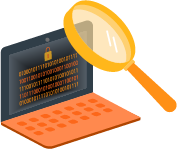Did you know that as much as 43% of cyberattacks target small businesses? Even though that's shocking, what's even more surprising is that many companies don't know where to start protecting themselves.
Today, just about every business is digitally transformed into a technology company. These organizations leverage AI and rapidly adopt other new technologies to stay competitive. However, if you're not careful, this approach can introduce risk and open the door to a cyberattack.
To make matters worse, the current threat landscape continuously grows more sophisticated and relentless. To counter it, small and medium-sized businesses (SMBs) must prepare and proactively defend against rapidly advancing threats. The consequences of not doing so can be devastating.
According to a recent study by IBM, a data breach can cost SMBS almost $5 million. That number reflects the growing complexity of present cybersecurity threats and the increasing sophistication of AI-powered cyberattacks.
These data breaches can quickly derail business operations, compromise high-value information assets, and lead to compliance (including CCPA, GDPR, HIPAA, PCI DSS, etc.) violations, fines, and reputational damage. Sadly, some never recover from a security event.
Failure to prepare for a cyberattack is not an option!
Securing your business's critical digital assets begins with a better understanding of your security posture. Whenever security teams identify vulnerabilities early, they can manage and mitigate risk more efficiently. This is only possible by engaging in regular cybersecurity risk assessments
Regular security assessments are critical as modern cybercriminals have grown more sophisticated and relentlessly. For example, AI helps adversaries attack your IT infrastructure at a more incredible speed and scale than previous eras. This makes it imperative for businesses to understand their cyber resilience and stay one step ahead of threat actors.
Early detection and resolution also mitigate the risk of data breaches and compliance violations. It provides an opportunity for companies to rally their troops and create a risk-aware culture.
What is a Cybersecurity Risk Assessment?
A cybersecurity risk assessment is a tool security teams use to analyze an organization's cybersecurity posture. It evaluates the ability of established security controls to detect and remediate vulnerabilities and seeks out and patches gaps in the infrastructure that threat actors could exploit.
Organizations should regularly conduct vulnerability assessments within the context of the organization's objectives. As cyber threats evolve, scheduling quarterly assessments or after big changes like new software rollouts is a must.
Security risk assessment differs from everyday cybersecurity audits, which focus on examining IT infrastructure. It also scrutinizes an organization's digital assets and procedures to gain high-level insights. This approach helps shed light on nooks and crannies where potential weaknesses in enterprise networks and corporate culture may exist.
Whenever a vulnerability assessment comes back with potential risks, security teams can prioritize these vulnerabilities according to those that pose a severe and immediate cyber threat and those that don't. This method helps teams assign roles and tasks to quickly implement security controls to mitigate risk in order of importance.
Before diving into how organizations should conduct cybersecurity assessments, it's important to remember that there are three critical phases in setting up a robust cybersecurity program. This post only focuses on the first phase - the assessment.
Once the companies complete the assessment phase, they will have to develop a cybersecurity strategy and move to the cybersecurity program implementation phase.
How to Conduct a Cybersecurity Risk Assessment: A Step-By-Step Guide
The best approach to conducting practical security risk assessments depends on various factors. For example, your geological location-specific regulatory requirements play a key role. Your industry and available organizational resources are also key factors. The intricacies of cyber risk assessments will vary from one organization to another. However, the foundation of cyber resilience will always remain the same.
The following is a step-by-step template companies can use to conduct thorough cybersecurity risk assessments and optimize risk management frameworks.
Step 1: Find Answers to Important Questions
Embarking on a comprehensive cybersecurity risk assessment starts by answering questions. The following is an example of questions security teams ask themselves at the beginning of a security assessment:
- What are the serious cyber threats faced by my organization?
- What are the cyber threats faced by my industry?
- What are the consequences of those potential threats?
- What are my organization's potential internal and external vulnerabilities?
- What about insider threats?
- What is the likelihood of hackers successfully exploiting those vulnerabilities?
- What cybersecurity assessment tools and processes (antivirus, firewalls, vulnerability scanning mechanisms, threat intelligence protocols, and penetration testing) should my organization use?
- What are my organization's critical digital assets, and where do they live?
- What is my organization's most sensitive data? Where is it stored?
- What is a potential data breach's far-reaching impact?
- What is the acceptable level of risk tolerance for my organization?
- What security measures should my organization adopt?
- What incident response plans are in place to quickly contain an active threat and limit the damage caused by cyberattacks?
- What are the latest security requirements?
- What is the best way to respond to identified vulnerabilities?
The answers to these security questions will provide a top-to-bottom view of your company's cybersecurity posture. A risk analysis will highlight the areas that demand your immediate attention. It's essential to prioritize risk because businesses, especially SMBs, have limited resources and need to know where to focus their cybersecurity investments.
As such, your security team, armed with the necessary information, will be at the forefront of formulating a security strategy and developing a cybersecurity action plan. Their role is not just important but integral to the risk assessment process.
This plan must focus on quickly addressing those vulnerabilities adequately in the most effective way possible. All the data gathered from risk assessments are key to making these informed decisions.
Step 2: Choose a Cybersecurity Assessment Frameworks
It's a good idea to follow an established cybersecurity assessment framework that aligns with industry standards. There are many frameworks, and they offer a structured and systematic approach to conducting security assessments. They help transform complex and potentially overwhelming tasks into manageable structured processes.
Key benefits of using assessment frameworks include:
- Standardization
- Prioritization
- Compliance
- Efficiency
- Clear communication
- Roadmap for improvement
The NIST Cybersecurity Framework (NIST) and the ISO 27000 standards are examples of proven cybersecurity assessment frameworks and are incredibly beneficial in helping you assess your organization's cybersecurity posture.
What is the NIST Cybersecurity Framework?
The NIST cybersecurity framework is a set of guidelines organizations can use to manage security risks. The NIST framework is flexible and can be implemented seamlessly by organizations of different sizes and sectors.
The latest iteration of the framework has six core functions:
- Identify
- Protect
- Detect
- Respond
- Recover
- Govern
We can break down these core functions into multiple categories and subcategories to make them easier to follow. These subcategories contain the actual cybersecurity controls and an extensive list of cross-references to well-known standards and frameworks. These include NIST SP 800-53, ISO 27001, COBIT, and ISA-62443.
By cross-referencing, organizations can implement and map the framework to other frameworks and standards. These frameworks come in handy when a security team member has to justify their decision regardless of what security standards they must comply with.
The NIST cybersecurity framework fuses several approaches to manage security threats effectively. These include:
- Security audits: These align with the Govern function, which focuses on ensuring compliance, accountability, and risk management within an organization.
- Defining roles: Also falling under the Govern function, it involves assigning clear roles and responsibilities for cybersecurity oversight.
- Monitoring: This is a key part of the Detect function. It's all about continuously observing systems in real-time to identify potential cybersecurity events.
- Setting up procedures: This spans multiple functions, such as Protect (establishing safeguards), Respond (defining incident response processes), and Recover (planning for restoration after an incident).
- Training: This fits within the Protect function, particularly in the awareness and education category, to ensure employees understand cybersecurity best practices.
The framework also supports cloud security protocols executing NIST's cybersecurity framework in Cloud Security Posture Management (CSPM).
What are ISO 27000 Standards?
The ISO 27000 family of standards is a series of best practices developed by the International Organization for Standardization (ISO). This internationally recognized framework focuses on information technology, information security management systems, and security techniques that help organizations boost and improve their information security protocols. They help organizations establish, implement, maintain, and improve an Information Security Management System (ISMS).
It's a systematic process to managing and protecting an organization's information assets, ensuring their confidentiality, integrity, and availability in the face of cyberattacks, data breaches, and other security threats. It also helps companies prove they met regulatory requirements for protecting sensitive information and other critical business data.
Overview of the ISO 27000 Series
The ISO 27000 series is made up of multiple standards that help address various aspects of information security management.
Some key standards in this series include:
- ISO 27001 is the most well-known standard in the series, providing a framework for creating and managing an ISMS. ISO 27001 outlines requirements for identifying high risks, implementing security controls, and ensuring continuous improvement. Organizations that achieve ISO 27001 certification prove their commitment to data security.
- ISO 27002 offers practical guidelines and best practices for implementing the security controls specified in ISO 27001. It covers access control, cryptography, physical security, and incident management, serving as a detailed companion to ISO 27001.
- ISO 27003 focuses on implementation. ISO 27003 guides how companies can apply ISO 27001 in practice. It helps organizations with planning, scoping, and executing an ISMS effectively.
- ISO 27004 addresses monitoring and measurement protocols and provides tools and metrics to conduct performance evaluations and assess the effectiveness of an ISMS. This approach ensures that it meets its objectives over time.
- ISO 27005 concentrates on risk management and offers an organized system businesses can use to identify, assess, and mitigate information security risks. As such, this approach aligns perfectly with ISO 27001's risk-based approach.
Step 3: Define the Scope
First, you have to know what you are going to assess. Start by specifying which systems, networks, or data you plan to include in your assessment. When your scope is clear and precise, it will help security teams focus on the task at hand. You don't want them to waste time on something that doesn't matter or overlook critical areas.
Step 4: Choose a Framework
Following a structured methodology like NIST or ISO 27001 is a good idea. These frameworks provide a roadmap, keeping your assessment organized and aligned with industry best practices.
Step 5: Identify Critical Assets
Narrow it down to the organization's most valuable assets. This can be anything from systems, processes, operational infrastructure, and data, including customer information and intellectual property. Knowing what to protect is the foundation of the assessment.
Step 6: Spot Threats and Vulnerabilities
Dive deep and identify potential risks. This means considering anything that threat actors can exploit. These include external threats (hackers or malware) and internal threats (disgruntled employees or human errors).
Step 7: Understand the Organization's Risk Tolerance
What is your organization's risk tolerance? The answer to this question will help you prioritize which risks demand immediate attention and which can be managed over time.
Step 8: Analyze Your Controls
Security teams must analyze controls that are in place to mitigate risk. Whenever current controls fall short, it's important to change them immediately.
To analyze these controls, businesses must:
- Identify existing controls for hardware, software, networks, data, and digital identities
- Cross-reference with cybersecurity assessment frameworks to identify gaps
- Document findings
- Map out missing or suboptimal controls
- Develop a plan to implement new controls
Enterprises must consider implementing nontechnical controls such as corporate cybersecurity policies and any physical mechanisms used to protect enterprise data—for example, backup servers, physical locks, keycard access, and much more.
Often, companies try to skip this step and go straight into control implementation. This is a big mistake, as you need to understand the cybersecurity threats you're facing. For example, the vulnerabilities present in your infrastructure, and vital areas that demand the most data protection to know what controls perfectly fit the use case.
Engaging in this activity also comes with the added benefit of helping you enhance your security strategy in your incident response plan.
Step 9: Involve Key Stakeholders
A successful security assessment isn't complete without feedback from all stakeholders. The insights provided by IT staff, management, and other relevant team members ensure that the assessment reflects real-world operations. It also helps cover all angles to make the evaluation more comprehensive.
Step 10: Perform an Information Value vs. Cost of Prevention Analysis
Before negotiating budgets to procure new security controls, conducting an information value vs. cost of prevention analysis is essential. It's important because sometimes, the cost of securing a particular data category might be more expensive than the fallout from a data breach.
For example, let's say you identified a threat that could cost the organization an estimated $1 million if hackers make it a reality. However, you also found that the likelihood of this threat rearing its ugly head is less than 10%. In this example, a budget of $100,000 a year is justifiable enough to protect against this specific security threat.
Analyzing, comparing, and making such decisions is important when working with tight cybersecurity budgets. However, the potential cost of a data breach shouldn't be the only factor dictating your decision. You must also consider the less obvious impacts of a cybersecurity breach, such as damage to brand value and reputation.
After completing your cybersecurity risk assessment, formulate a risk management strategy that considers the risk level of various vulnerabilities. As such, it should enable you to allocate your risk mitigation budget most effectively.
Why is a Cybersecurity Risk Assessment So Important?
A comprehensive cybersecurity assessment is the only way businesses can stand a chance in defending themselves. After all, the global cost of cybercrime is projected to reach $10.5 trillion this year, reaffirming the ever-increasing financial impact of cyberattacks and data breaches worldwide.
According to IBM, almost 46% of all data breaches involve customer personal identifiable information (PII). This includes tax IDs, emails, phone numbers, and home addresses. So, if you're handling customer information, fortifying your organization's cybersecurity posture is critical.
By engaging in cybersecurity assessments, enterprises can proactively mitigate risks and protect themselves from ransomware, malware, social engineering (including phishing campaigns), Distributed Denial-of-Service (DDoS) attacks, and data breaches.
Furthermore, organizations are also better placed to avoid hefty fees for regulatory and compliance violations. Cybersecurity risk assessments also help organizations ensure compliance with the following regulatory standards:
This approach also helps staff better understand the level of risk, available defenses, and potential vulnerabilities. All this information could prove to be incredibly valuable if you happen to find yourself scrambling to respond to a cyberattack.
Ensure You're Protected with Effective Cybersecurity Risk Management
As security incidents grow into daily or even hourly occurrences, companies can no longer risk failing to protect sensitive data or the high costs that come with it. It doesn't matter whether it's a small business or a massive corporate giant. Threat actors are targeting everyone, making conducting regular cybersecurity risk assessments a must.
It's worth going through the above mentioned steps and conducting a thorough cybersecurity risk assessment. Doing this regularly can ensure that your organization remains as secure and well-defended as possible. You must also follow through by streamlining this approach to incident response and remediation if a data breach does occur.
As mentioned, a cybersecurity risk assessment is only the first step in optimizing your organization's cybersecurity program. The next step will take these insights to leadership teams, CISOs, and key stakeholders to develop a robust cybersecurity strategy or initiative. Once formulated, it will be time to implement it across the organization.
Whenever in-house resources don't fit the bill, there's always help around the corner. An experienced Managed Security Services (MSS) provider can help you conduct the most thorough cybersecurity assessments and fortify your infrastructure throughout its lifecycle.
Categories: Security, Strategy, Cyber Security, Managed Security Services, IT Security, Cybersecurity, Security Strategy, Cybersecurity Strategy, IT Security Strategy, Cybersecurity Assessment, NIST Framework, Cyber Security Assessment, Cybersecurity Assessment Framework, Data Protection, IT Security Assessment, Cybersecurity Risk Assessment, Cybersecurity Audit, Cybersecurity Checklist, Cybersecurity Solutions, Cybersecurity Compliance, Cybersecurity Threats, Cybersecurity Training, Cybersecurity Risk Assessment Steps, Cybersecurity Audit Process, Cybersecurity Assessment Template, How to Conduct a Cybersecurity Assessment











